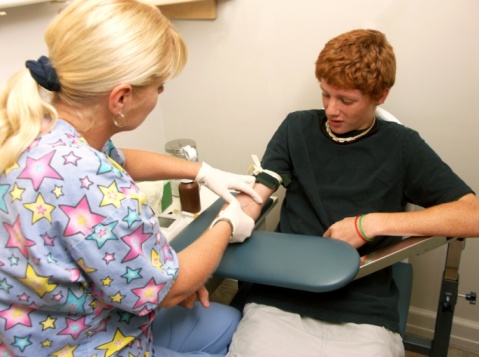

Physician assistants (PAs) are master’s prepared medical professionals who administer a variety of preventive, diagnostic, and therapeutic healthcare services under the direction of a physician. From taking a medical history to ordering tests and educating the community, PAs treat patients with many different needs in many different settings. In some cases, patients may see a PA and never even realize that they haven’t seen a physician.
Physician assistants are in high demand, and job growth is expected to surge over the next decade as the changing healthcare landscape and loss of primary care providers drives up demand. With an average salary of $90,000 per year and a wide range of practice areas, it’s no surprise that almost 90% of PAs working in a managed care setting expressed high job satisfaction.
Job duties of a physician assistant can vary widely depending on the needs of the physician who hired them, their specialty area, and the governing rules of the state where the PA practices. Depending on the location, some PAs may be able to see patients independently in a rural health clinic, hospital or long-term care facility as long as they have an agreement with a physician to allow it. Other PAs work closely with a physician team and see their supervising doctor every day.
Most PAs will have some duties that span every specialty. These may include:
Beyond these basic tasks, PAs may provide more advanced care. For example, a PA who works for a surgeon may spend their days in the operating room assisting with procedures, suturing or closing up incisions, or monitoring patients post-operatively. Physician assistants work in many areas of healthcare including primary care, women’s health, pediatrics, mental health, internal medicine, surgery and much more.
As with any career involving patient care, the qualities of a good PA will include a good bedside manner — the ability to be sympathetic, listen well, and help patients feel comfortable. Being able to communicate clearly with both patients and their supervising physician is also essential. Because most PAs will work with a team of other medical professionals, flexibility and a team-playing approach is always helpful. A good PA will have well developed assessment skills and an interest in thinking outside the box to diagnose complex medical conditions. He or she should have an interest in research and a desire to solve problems.
Becoming a physician’s assistant can take many years of undergraduate training, real-life work experience, and graduate school. So before you dive in, here are some good and bad points of the career to consider.
Physician assistants hold a master’s degree from an accredited physician assistant program and must pass a national certifying examination to see patients. Some students who enroll in PA school may have a medical background—like a nurse, EMT or paramedic. This is fine as long as the applicant has completed a bachelor’s degree first.
PA programs usually require two years of full-time study or four years part-time to complete. There are approximately 140 accredited physician assistant programs in the U.S. These programs focus on classroom, laboratory, and hands-on clinical training to prepare PAs for practice. Classes include anatomy, physiology, pharmacology, assessment, medical ethics and more. Students are required to complete a set number of clinical hours for graduation. These numbers may vary slightly by educational institution and the state where the student lives. PAs must be licensed in every state of the U.S. and are required to maintain 100 hours of continuing education every 2 years and re-take the certification examination every 10 years.
Average salary for a physician assistant is around $90,000 per year. According to the Bureau of Labor Statistics, the highest-ranking PAs made more than $124,000 per year. Lowest ranking assistants brought in about $62,000. Pay is subject to a variety of factors including work setting (hospital, clinic, private practice, etc.), specialty area, years of experience, and geographic location.
Both PAs and nurse practitioners are considered mid-level providers—medical providers that see and treat patients but are not doctors. Nurse practitioners have completed nursing school and practiced in their field for 1-2 years at minimum before becoming a practitioner and also hold a masters or doctorate degree in nursing. Physician assistants and nurse practitioners do many of the same tasks as they assess, diagnose and treat patients in hospital or clinic settings. In some cases, nurse practitioners may earn slightly higher pay than PAs.
By Rachel Ballard RNC, BSN
 Rachel Ballard
Rachel Ballard
Rachel Ballard is a certified registered nurse and owner of the medical writing company iHealth Communications. iHealth teams with healthcare leaders to create written content that boosts revenue and builds relationships. Learn more about Rachel on Google+